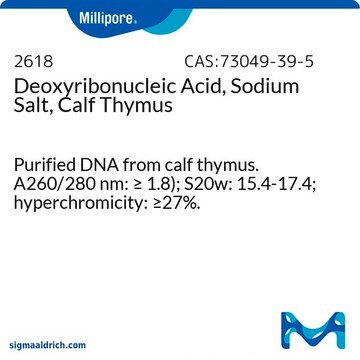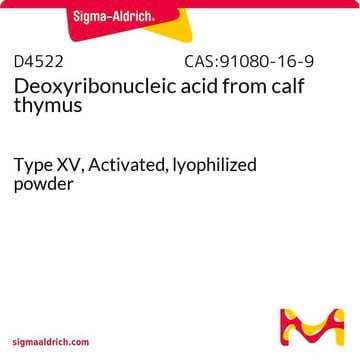D1501
Deoxyribonucleic acid sodium salt from calf thymus
Type I, fibers
Synonym(s):
ctDNA, DNA sodium salt from calf thymus, Thymonucleic acid sodium salt
About This Item
Recommended Products
type
Type I
form
fibers
color
white
storage temp.
2-8°C
Looking for similar products? Visit Product Comparison Guide
Application
Quality
Physical properties
DNA from calf thymus is 41.9 mole % G-C and 58.1 mole % A-T.1 An OD of 1.0 at 260 nm corresponds to ~ 50 μg of double-stranded DNA.
Physical form
Preparation Note
Reconstitution
Storage Class Code
11 - Combustible Solids
WGK
WGK 3
Flash Point(F)
Not applicable
Flash Point(C)
Not applicable
Personal Protective Equipment
Certificates of Analysis (COA)
Search for Certificates of Analysis (COA) by entering the products Lot/Batch Number. Lot and Batch Numbers can be found on a product’s label following the words ‘Lot’ or ‘Batch’.
Already Own This Product?
Find documentation for the products that you have recently purchased in the Document Library.
Customers Also Viewed
Protocols
Spectrophotometric assay at 260 nm measures nuclease S1 activity, vital for nucleic acid research, with defined enzyme unit criteria.
Our team of scientists has experience in all areas of research including Life Science, Material Science, Chemical Synthesis, Chromatography, Analytical and many others.
Contact Technical Service














